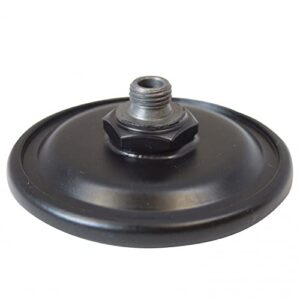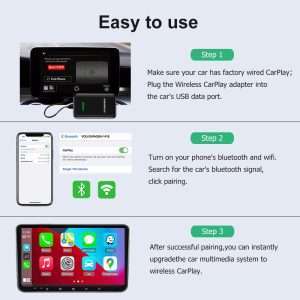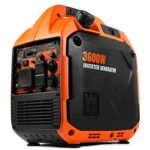Ford F150 body control module problems can cause issues with various electrical components in the vehicle. These problems may lead to malfunctions in systems such as the power windows, door locks, and interior lighting.
If you are experiencing these issues, it is crucial to have the body control module inspected and potentially replaced by a qualified mechanic to ensure the proper functioning of your vehicle.
The Ford F150 is a popular and reliable truck, but like any vehicle, it can experience problems with its components.
One such component is the body control module, which is responsible for managing various electrical functions within the vehicle. When this module malfunctions, it can lead to issues with the operation of essential systems.
We will discuss common Ford F150 body control module problems, their symptoms, and the steps you can take to address these issues effectively.
Table of Contents
Common Signs Of Ford F150 BCM Problems
The Body Control Module (BCM) is a crucial component in the Ford F150’s electrical system, responsible for managing various functions such as lighting, power windows, and central locking.
When the BCM malfunctions, it can lead to a range of issues that can affect the vehicle’s performance and safety.
Being aware of the common signs of Ford F150 BCM problems can help you address the issues promptly and avoid potential safety hazards on the road. Here are some of the key indicators to look out for:
Erratic Electrical Issues
One of the telltale signs of a faulty BCM in your Ford F150 is experiencing erratic electrical problems. Flickering headlights, malfunctioning interior lights, or intermittent power window operation are common symptoms that may signal a BCM malfunction.
These issues can be disruptive and compromise the overall driving experience, indicating the need for BCM diagnostics and potential replacement.
Inconsistent Performance
A malfunctioning BCM can also lead to inconsistent performance in various systems of your Ford F150.
This can manifest as unpredictable engine behavior, irregular idling, or sudden stalling. In addition, you may notice unusual fluctuations in fuel efficiency or responsiveness, all of which can point to a potential BCM issue that requires thorough inspection and troubleshooting.
Unresponsive Controls
When the BCM is experiencing problems, you may encounter unresponsive controls for critical vehicle functions. This can include unreliable door locking mechanisms, non-functional turn signals, or issues with the central locking system.
Such unresponsiveness can pose safety risks and inconvenience, warranting immediate attention to rectify the underlying BCM issues.
Understanding Ford F150 BCM Malfunctions
Understanding Ford F150 BCM Malfunctions is crucial for ensuring the smooth operation of your vehicle. The Body Control Module, or BCM, plays a critical role in controlling various electrical components and systems within your Ford F150.
However, like any other electronic device, the BCM is susceptible to malfunctions which can significantly impact the vehicle’s performance and functionality.
Role Of Body Control Module
The Body Control Module (BCM) in a Ford F150 serves as the central hub for managing and coordinating various electrical systems. It acts as a control center for functions such as power windows, door locks, lighting, and other key components.
Essentially, the BCM acts as a communication interface between different vehicle systems, ensuring seamless operation and proper integration.
Impact On Vehicle Functions
When the Body Control Module malfunctions, it can lead to a host of issues affecting the vehicle’s basic functions and operational capabilities. Faulty BCM can cause problems with power windows, door locks, lighting, and other electronic systems.
In some cases, it may even lead to difficulties starting the vehicle or irregular behavior of various electronic components, impacting the overall performance and safety of the vehicle.
Diagnostic Steps For Ford F150 BCM Problems
When facing issues with the Body Control Module (BCM) of your Ford F150, it’s important to conduct thorough diagnostic steps to pinpoint and resolve problems effectively.
By following proper diagnostic procedures, you can efficiently address BCM issues and keep your vehicle in top condition. Below are essential diagnostic steps to follow when encountering Ford F150 BCM problems.
Checking Error Codes
One of the initial diagnostic steps for addressing Ford F150 BCM problems is to check for error codes. Using a reliable diagnostic scan tool, scan the BCM for any stored trouble codes.
By identifying specific error codes, you can gain valuable insights into the underlying issues affecting the BCM of your Ford F150.
Testing Electrical Connections
After identifying potential error codes, the next crucial diagnostic step involves thoroughly testing the electrical connections associated with the BCM.
It’s essential to inspect and test the wiring harness, connectors, and terminals for any signs of damage, corrosion, or poor connections. Ensure proper voltage and continuity testing to validate the integrity of the electrical connections.
Inspection Of Fuses And Relays
Another critical aspect of diagnosing Ford F150 BCM problems is to conduct a comprehensive inspection of the fuses and relays related to the BCM functionality.
Check and test each fuse and relay associated with the BCM to verify their condition and functionality. Any faulty fuses or relays should be replaced with appropriate replacements to ensure proper operation of the BCM.
Ford F150 BCM Repair Options
When facing issues with the Body Control Module (BCM) in your Ford F150, it’s crucial to understand the repair options available.
Whether you prefer DIY troubleshooting or seeking professional repair solutions, addressing BCM problems promptly is essential to maintaining the vehicle’s optimal performance.
DIY Troubleshooting Tips
Before considering professional assistance, there are DIY troubleshooting tips that you can undertake to address common BCM problems. Here are some practical steps to take:
- Check for Loose Connections: Ensure all wiring connections to the BCM are secure and free from corrosion.
- Inspect for Water Damage: Look for signs of water intrusion that may affect the BCM’s functionality.
- Reset the BCM: Disconnect the battery, wait for a few minutes, and then reconnect it to reset the BCM.
- Scan for Error Codes: Use an OBD-II scanner to check for any error codes related to the BCM.
Professional Repair Solutions
If DIY troubleshooting doesn’t resolve the issue, professional repair solutions are available to effectively address Ford F150 BCM problems. Here are some options to consider:
- BCM Replacement: An experienced mechanic can replace the faulty BCM with a new or refurbished unit.
- Software Reprogramming: Specialized diagnostic tools can reprogram the BCM to rectify software-related issues.
- Diagnostic Services: Car service centers offer comprehensive diagnostic services to pinpoint and resolve BCM concerns accurately.
Preventive Maintenance For Ford F150 BCM
Preventive Maintenance for Ford F150 BCM is crucial for ensuring the proper functioning of the vehicle’s body control module.
By implementing regular electrical system checks and handling electrical components properly, you can prevent potential issues and maintain the longevity of your Ford F150 BCM.
Regular Electrical System Checks
Conducting regular electrical system checks is essential for preventing potential Ford F150 BCM problems. By inspecting the wiring, connections, and overall electrical system, you can identify and address any issues before they escalate.
Proper Handling Of Electrical Components
Proper handling of electrical components is crucial for the overall health of the Ford F150 BCM. Ensuring that electrical components are handled with care during maintenance and repairs can prevent damage and malfunctions that may affect the body control module.
Frequently Asked Questions
What Are The Common Symptoms Of A Faulty Ford F150 Body Control Module?
The most common symptoms include malfunctioning of power windows, door locks, and interior lights, as well as issues with the vehicle’s security system.
How Can I Diagnose If My Ford F150 Body Control Module Is Defective?
To diagnose a faulty BCM, conduct a thorough inspection of the vehicle’s electrical system, including testing the power windows, door locks, and security system. Consider seeking professional help for accurate diagnosis.
What Are The Possible Causes Of Ford F150 Body Control Module Problems?
Potential causes include electrical system malfunctions, water damage, or issues with the vehicle’s security system. Proper diagnosis is essential to identify the exact cause.
Can A Defective Ford F150 Body Control Module Be Repaired, Or Does It Need Replacement?
In some cases, the BCM can be repaired if the issue is minor. However, severe damage may require a complete replacement. Consult a professional for the best solution.
Conclusion
Ford F150 body control module problems can be frustrating and costly to repair. It’s essential to stay proactive in monitoring for any signs of malfunction to avoid further complications.
By staying informed about common issues and seeking professional assistance when necessary, you can extend the lifespan of your vehicle and minimize repair costs.








